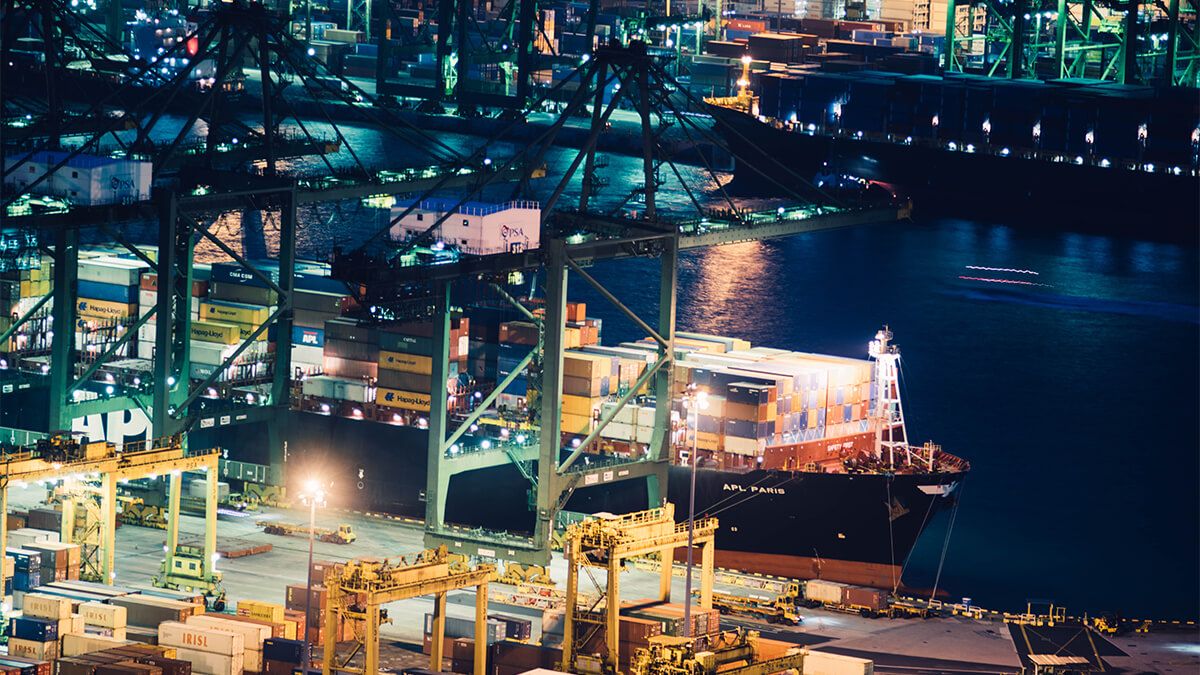BLOG
Telecom26 blog

Telecom26 provides maritime connectivity to global shipping companies and, consequently, we experienced first-hand how COVID has affected their businesses.
DHL’s March 2021 Ocean Freight Market Update reports that overall volume growth for the top 25 ports was flat in 2020 with a combined 395.7m TEU (20-foot equivalent containers) handled, a growth of +0.55% on 2019.
COVID continues to cause problems as the “shipping industry is facing unforeseen heavy port congestion and vessel delays worldwide” combined with “a severe lack of vessels”.
According to the report, “more than 1,000 dockworkers in California tested positive for COVID-19 at the start of February, up from 694 cases in January which means that waiting times at anchorage now often exceed 1 week”.
This article in The Economist in February titled “Container-shipping costs have surged in recent months” focuses on how “Rising consumer demand and constrained supply of containers is causing disruption on the seas”.
Last year “as Western consumers cancelled their holidays, and used the savings to buy smartphones, laptops and other goods, exporters were left scrambling for containers” with “thousands of containers were stranded in European and American ports, rather than in Asian ones where they were needed”.
Port Connectivity - IoT maritime connectivity and maritime cellular communications
Port congestion and a shortage of containers and ships means that it is even more vital to release capacity through the faster turnaround of vessels in-port.
Of course, effective communication - both voice and data - is more important than ever. Especially for fully automated ports where all devices are connected via IoT using a network of smart sensors and actuators, wireless devices, and data centres to enable port authorities to deal with larger ships, ever-increasing volumes of freight - and to bring together the entire shipping and logistics supply chain ecosystem.
Telecom26 provides IoT maritime connectivity and maritime cellular communications for ports - and the vessels that use them.
We’ve invested in dedicated technology to enable maritime and smart port solutions and can customise our offering to provide vessels, port personnel and infrastructure with the digital services, personal comms and IoT device data management they need to keep ships moving - and cargo safe and secure.
Inaddition, we provide offshore and nearshore maritime cellular communications for ferries, cruise liners, fishing vessels and more. We also enable private networks, both onshore – for ports – and offshore, to provide capacity onboard. Private networks can be bridged with public networks, but with full control, enabling a cohesive but managed service to be delivered.
So, we’re right at the leading edge of designing and enabling such solutions and understand the challenges that IoT and 5G coverage will bring – as well as the opportunities. Amidst all the excitement generated by 5G, it’s important to note that we can already enable many of these services via LTE, which means you don’t need to wait to benefit from the latest innovations in maritime and smart port technology.
To learn more about Telecom26’s suite of IoT maritime connectivity and maritime cellular communications services please click here.

